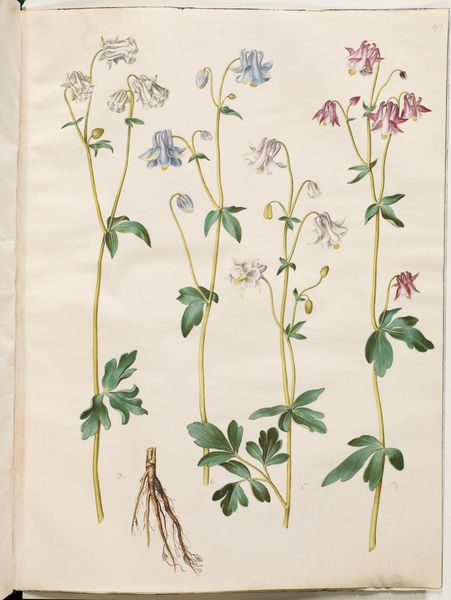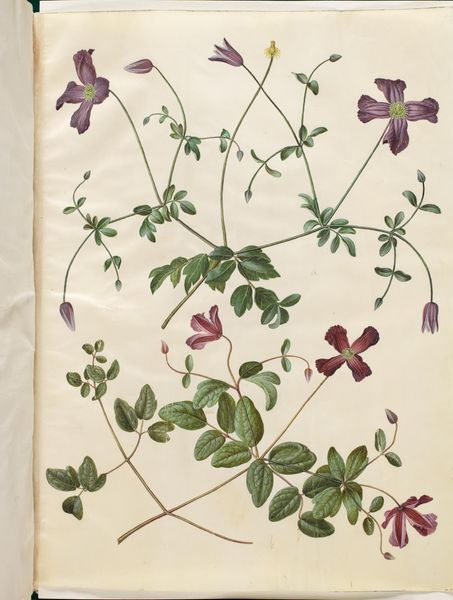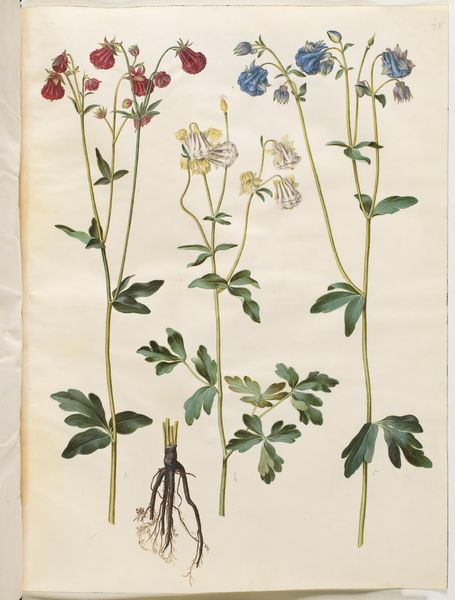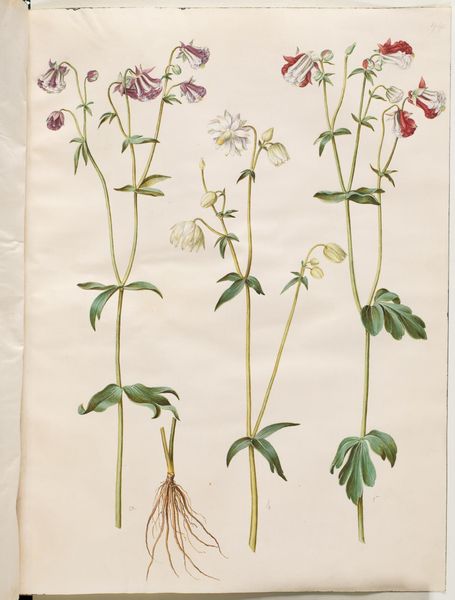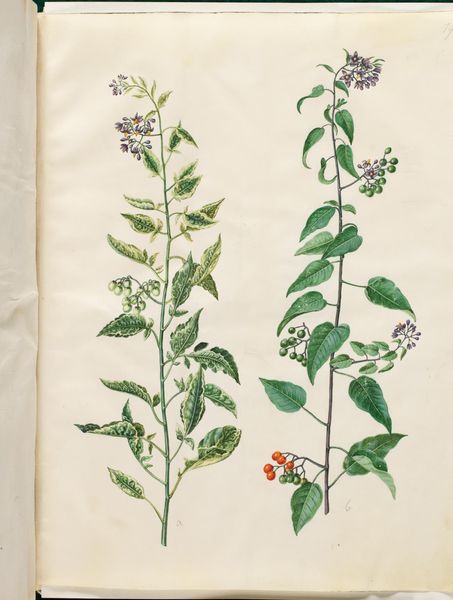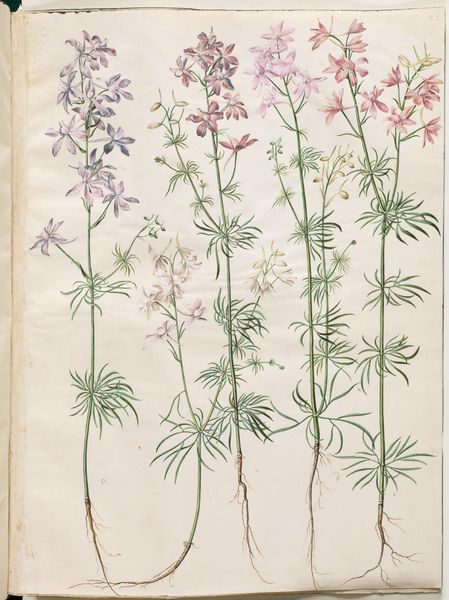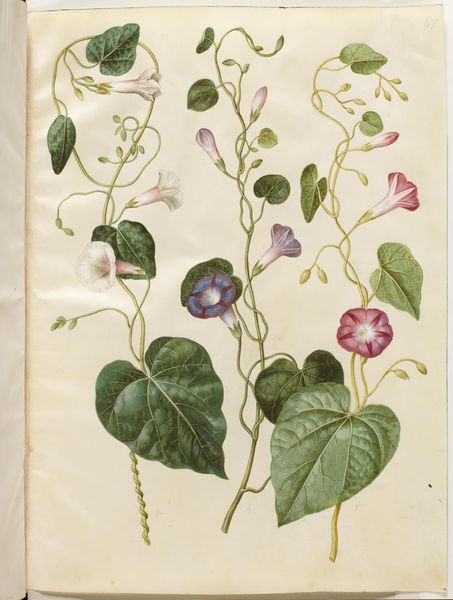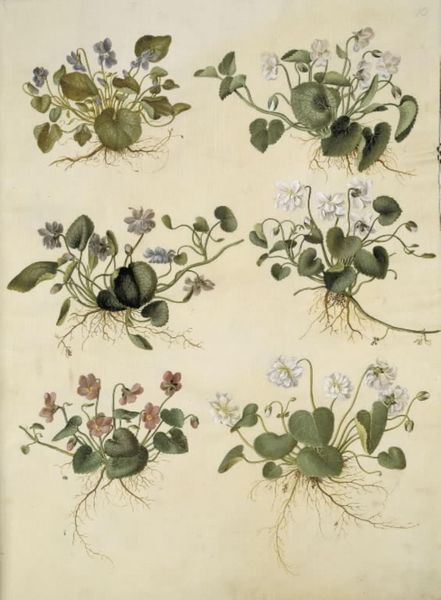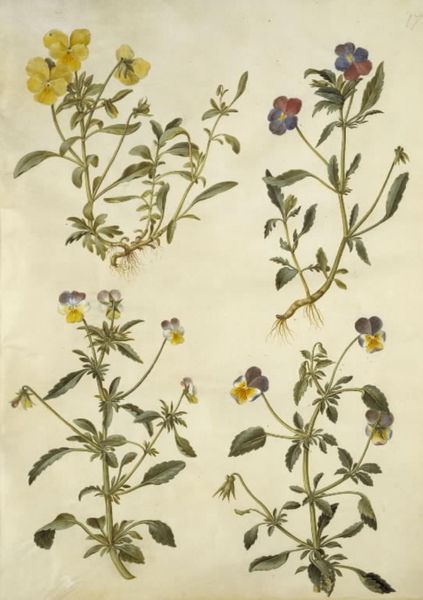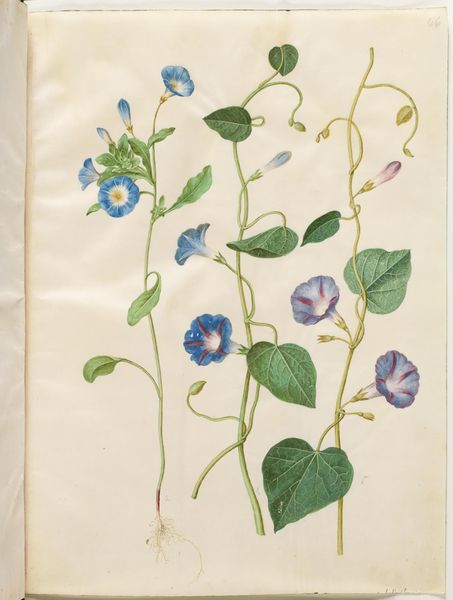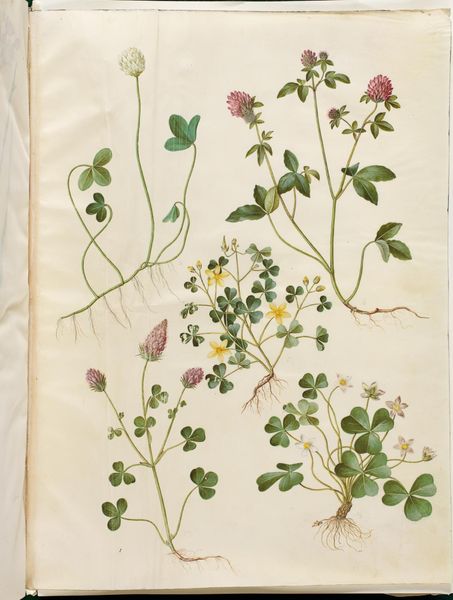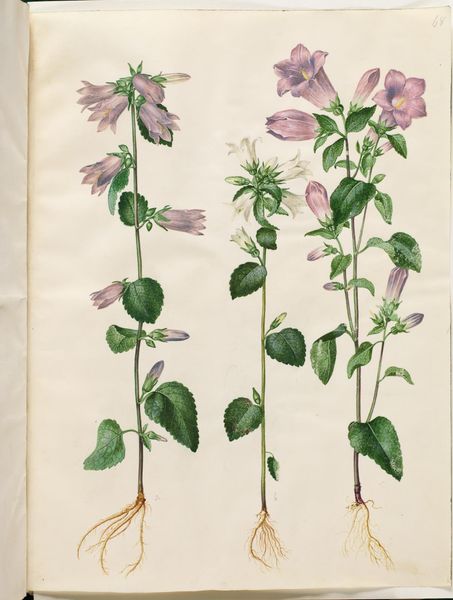
Clematis integrifolia (blå staudeklematis); Clematis viticella (italiensk skovranke) 1649 - 1659
0:00
0:00
drawing, coloured-pencil, gouache, watercolor
#
drawing
#
coloured-pencil
#
gouache
#
watercolor
#
coloured pencil
#
genre-painting
Dimensions: 505 mm (height) x 385 mm (width) (bladmaal)
Here we see 'Clematis integrifolia; Clematis viticella,' created by Hans Simon Holtzbecker. A piece that offers us a window into the botanical interests of the 17th century. Holtzbecker, working in a time of exploration and scientific inquiry, captures the clematis with an eye for detail that speaks to the period’s fascination with the natural world. What does it mean to represent nature so precisely? In a world of expanding empires, botanical drawings like these were more than just art; they were a form of cataloging and possessing the earth's resources. The clematis itself, with its delicate vines and striking blooms, invites us to consider themes of growth, resilience, and adaptation. It subtly mirrors the complex relationships between humans and nature, and the power dynamics inherent in observing and documenting the world around us. How does the act of artistic representation shape our understanding of nature and our place within it?
Comments
No comments
Be the first to comment and join the conversation on the ultimate creative platform.
